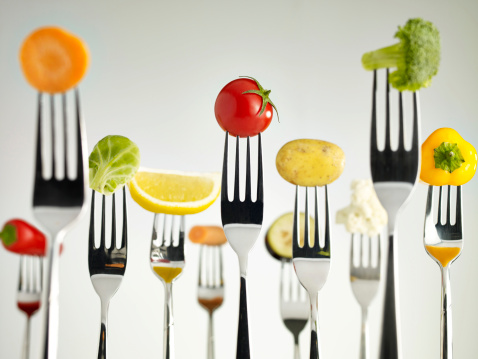
Everything old is new again. Take the example of the raw food diet. This healthy foods diet is being recommended by all kinds of health professionals as a way to protect against disease. Raw foods—those healthy foods that your grandmother ate everyday—are higher in nutrients, enzymes, vitamins, and minerals than any cooked foods you might be eating.
When your grandparents felt like a snack, it’s likely they pulled an apple or pear off the fruit tree in the backyard and started munching. Likewise, when they were preparing dinner, they probably went to the vegetable patch and grabbed some fresh leafy greens, carrots, and green beans to add to their meal. Eating raw healthy foods has become a rarity in our culture. Foods that we once ate raw are now cooked and as a result have lost much of their nutritional power. People don’t have fruit trees in their backyards anymore, and most have fallen out of the practice of keeping and tending a vegetable garden.
This distancing from Mother Nature has led to an increasing reliance on cooked and prepared foods. Where once raw healthy foods were part of everyday meals, now they might show up on your plate only once or twice a week.
It’s time to get back into the habit of eating raw healthy foods on a regular basis. Not every meal has to be raw but at least half your meals should contain raw foods if you want to give your body the best chance to stay strong and healthy.
Which healthy foods are considered raw? Fruits and vegetables, nuts, seeds, and sprouts all fall into this category. Other raw foods can include oysters, fish, and even some kinds of red meat. However, there have been concerns expressed about these foods being contaminated with harmful bacteria. While many, many people consume raw oysters (a raw food incredibly high in zinc) without any adverse health effects, for example, you’ll have to decide yourself if it’s a good idea to eat these foods.
Here are five ways you can increase the amount of raw foods in your diet:
1. Eat fresh fruit every day. This could mean having some cantaloupe or honeydew melon for breakfast or having an apple or pear for a mid-day snack. Getting raw fruits into your diet every day should be easy.
2. Eat some raw, fresh veggies every day. You can try some traditional carrot and celery sticks. Other options include red and green pepper slices, a leafy green salad, or tomato and fresh parsley added to a sandwich.
3. Add a handful of nuts or seeds to your daily diet. You can add a handful of walnuts to any salad. You can eat a handful of raw almonds for a snack. Add a spoonful of hempseeds to your soup or salad. Sesame seeds make a great addition to any smoothie. These healthy foods are very beneficial for you!
4. Don’t forget to add sprouts to your meals. Sprouts are a very nutritious, raw ingredient that can add flavor to any salad, sandwich, or soup. You can even add sprouts to your favorite smoothie recipe.
5. Learn about raw recipes by searching online. Make one or two entrées every week that are entirely made from raw ingredients.
Sources:
Wasserman, M., “Raw Foods: Why You Should Eat More of Them,” Chatelaine web site, Jan. 5, 2014; http://ca.shine.yahoo.com/raw-foods-why-eat-way-more-them-130000773.html, last accessed Jan. 7, 2014.
Koebnick, C., et al., “Long-term consumption of a raw food diet is associated with favorable serum LDL cholesterol and triglycerides but also with elevated plasma homocysteine and low serum HDL cholesterol in humans,” J Nutr. October 2005; 135(10): 2372-8.
Galati, P.C., et al., “Microbiological profile and nutritional quality of raw foods for neutropenic patients under hospital care,” Rev Bras Hematol Hemoter 2013; 35(2): 94-8.













